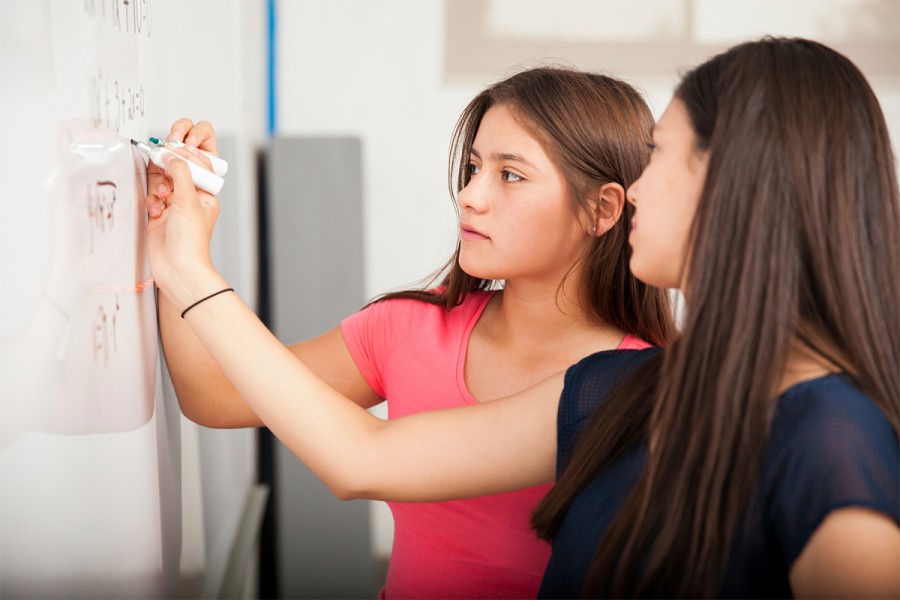Mathematics and statistics – classroom activities
Ideas on how to relate mathematics and statistics teaching to future careers and life beyond school.
What's on this page?
- Activities for Year 7 upwards
- Activities for Year 11 upwards
- Activities for all ages
- School-wide activities
- Classroom discussion points
- Planning questions
- Teacher reflection questions
- Linking career education to the mathematics and statistics curriculum
- Careers New Zealand website links
- External website links
In mathematics and statistics, students explore relationships in quantities, space, and data, which help them make sense of the world around them.
By building career-related activities into your curriculum area you are helping your students to develop the understandings, skills and attributes that they need to make positive career decisions throughout their lives.
Activities for Year 7 upwards
- Encourage critical thinking by continually relating in-class learning to out-of-class contexts.
- Allow students time to write in their learning and career plans about the skills they are learning in the subject.
- Set homework activities that include using this website to research mathematics and statistics-related occupations.
- Encourage discussion about what occupations use mathematical skills.
- Use the Careers New Zealand website to find information on average wages for a range of jobs. Supply students with the data and ask them to graph the results.
- Encourage students to use the Internet to research their role models’ career paths.
Use this website to find a number of mathematics and statistics-related occupations for your class. Ask students to each pick one occupation and then research it by:
- interviewing a famous person, or someone they know, who is in that job
- finding information on the Internet
- asking family/whānau if they know a person in the occupation who would be willing to talk about their work
- texting CAREER to 434 to get a career information pack posted to them.
Activities for Year 11 upwards
- Ask students why they have chosen this subject, what skills they bring to it, and what skills they will develop. Then discuss how these skills and interests can be transferred to the outside world.
- Encourage students considering STAR or Gateway to select courses or work experience that match their skills and interests.
- For homework, ask students to survey occupations, collecting specific data and comparing their findings with other sources.
- Ask students about times in the past when they have used mathematics and statistics, how they used them, and what skills they have developed.
- Encourage students to record their skills and achievements in their CVs using the CV Builder tool on this website.
Encourage discussion about occupations that involve a certain aspect of mathematics or statistics. For example:
- dairy farmers calculate volume
- landscape architects focus on shape and design
- architects analyse symmetrical patterns
- marketers use statistics.
Activities for all ages
- Invite guests from the community to speak about their career pathways.
- When developing research topics, try to include careers content. For example, research 10 mathematics or statistics-related occupations or tasks that would be involved with planning the next Rugby World Cup.
- Start a discussion about the impact mathematics and statistics have had on the world of work.
- Provide opportunities for students to do mock interviews. The focus of the interviews could be mathematics and statistics-related occupations.
- Create a careers corner in your classroom. This could feature subject/occupation-related posters, tertiary posters, magazines and books that are related to mathematics and statistics, and newspaper articles.
- When doing out-of-classroom activities try to link careers content to each activity. For example, when visiting a work setting, have a set of questions students can ask about occupations and career pathways.
- Make the most of your students’ favourite medium. For example, create an exercise involving mobile learning. Ask students to text someone about something that is relevant to what they are doing in class. (For example, they could conduct a survey via text.) This could also be an inter-class texting session. Ask students to text another student identifying three skills the latter has in your subject area.
- Encourage students to text or email Careers New Zealand and ask for information on a particular industry, occupation or course of study.
School-wide activities
A wide range of activities will take place in your school during the year. Consider how you can incorporate career education into them. Event examples are:
- sports events
- school fundraising
- community events
- Matariki
- kapa haka
- career expos.
Classroom discussion points
Take five minutes at the end of a lesson to have a discussion about careers, or set homework on a careers topic. Questions you could ask include:
- Which jobs can be related to mathematics and statistics?
- Which jobs require a high level of mathematics and/or statistics? Which have low-level requirements? Why?
- Who could you talk to if you wanted to find out about becoming a...?
- Do civil engineers need good measurement skills? Why? Why not? (You can use other occupations for this exercise.)
- Why do tradespeople need mathematics?
- Why is an industrial designer similar to a property valuer? (You can use other occupation combinations.)
Planning questions
- What occupations link to my subject? Do I know anyone involved in these occupations who I could invite to visit students as part of my teaching programme?
- What research topics could my students cover that would help them explore mathematics and statistics-related careers?
- What mediums can I use? What resources are out there for me?
- What unit standards could I cover using careers-related material?
- How can I make the most of my school’s careers adviser?
- How can I make sure that I am being inclusive of Māori and Pasifika world views?
Teacher reflection questions
- Do I know what my students' career aspirations are?
- Do I have an up-to-date understanding of the importance and use of the skills I teach in mathematics and statistics in the workplace? If not, how could I brush up on that knowledge?
- Do I have support from senior management? How can I get this?
- What combination of subjects are my students taking? What is their rationale for this? How can I better help my Year 10 students during subject choice time?
- Am I encouraging students to reflect on the relevance of their learning to their options after they leave school?
- Have my students set clear goals? What other skills do they need to develop on top of mathematics and statistics for them to achieve their goals?
- How can I make the most of school events such as parent evenings?
- What do parents know about career pathways related to mathematics and statistics? How could I help parents improve their understanding of this?
- Is my school using The Real Game with junior classes? How can I utilise the mathematics component of this?
- What mathematics activities can I incorporate with careers expos?
Linking career education to the mathematics and statistics curriculum
Here are some of the objectives from the mathematics and statistics curriculum that can be related to career education.
Level 4
Patterns and relationships
Generalise properties of multiplication and division with whole numbers. Use graphs, tables and rules to describe linear relationships found in numbers and spatial patterns.
Level 5
Geometry and measurement
Select and use appropriate metric units for length, area, volume and capacity, weight (mass), temperature, angle, and time, with awareness that measurements are approximate.
Level 6
Statistical literacy
Evaluate statistical reports in the media by relating the displays, statistics, processes and probabilities used to the claims made.
Level 8
Statistical investigation
Make inferences from surveys and experiments: determining estimates and confidence intervals for means, proportions, and differences, recognizing the relevance of the central limit theorem.
Careers New Zealand website links
Find out more about these mathematics and statistics-related industries:
External website links
Updated 16 Jul 2024


